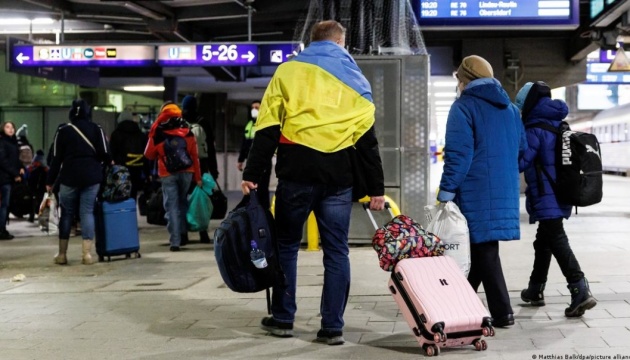
Some 3.8M Ukrainians gained access to temporary protection in the EU as of late 2022
As Russia started its full-scale invasion of Ukraine in February 2022, the European Union promptly responded by activating, for the first time, the Temporary Protection Directive for the Ukrainian refugees fleeing the war. In December 2022, there were 3.8 million beneficiaries of temporary protection in the EU.
The relevant briefing was published by the European Parliamentary Research Service (EPRS), an Ukrinform correspondent reports.
“Russia’s war of aggression against Ukraine, launched in February 2022, forced more than eight million people to leave Ukraine. The EU promptly responded by activating, for the first time, the Temporary Protection Directive granting people fleeing the war immediate temporary protection status in the EU and a harmonised set of rights related to accommodation, education, healthcare, and access to work. According to Eurostat, in December 2022 there were 3.8 million beneficiaries of temporary protection in the EU,” the report states.
Meanwhile, having access to temporary protection does not preclude people from applying for international protection in the EU, although, in certain cases, the two legal statuses cannot be combined. In 2022, 28 000 Ukrainians lodged asylum applications in the EU+ area, i.e. 27 EU Member States, and Iceland, Liechtenstein, Norway and Switzerland.
In 2022, about 13 million Ukrainian refugees were counted on entry at the EU’s external land borders, and about 10 million were reported on exit at the same border sections. The European Commission developed operational guidelines for external border management, advising Member States to set up temporary border crossing points and to relax border checks as a result of exceptional and unforeseen circumstances. Frontex stepped up its operational support to Member States and partner countries such as Moldova. It deployed more than 500 standing corps officers along the eastern border, including about 350 officers working at the EU-Ukraine borders.
The EU and its Member States also took steps to restrict the entry of Russian nationals into the EU. As part of several comprehensive packages of sanctions against Russia, the EU imposed travel restrictions and an asset freeze on 1,412 persons (as of February 8, 2023), whose actions undermine or threaten the territorial integrity, sovereignty and independence of Ukraine.
